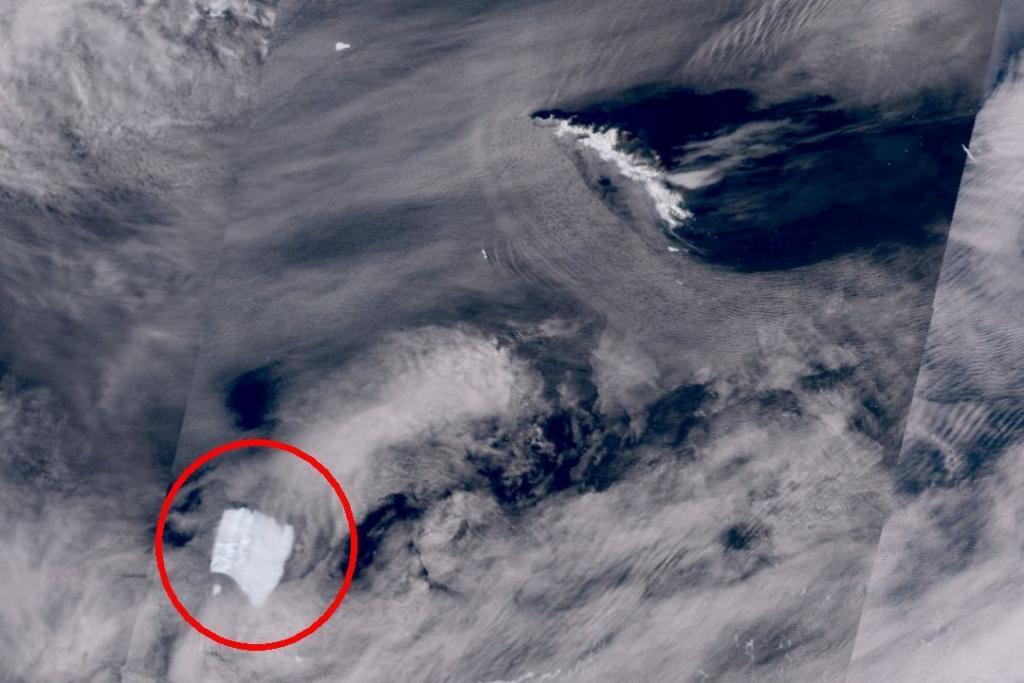
World’s Largest Iceberg Runs Aground Near Antarctic Island
In a remarkable turn of events, the world’s largest iceberg, A23a, has finally come to rest after a 40-year journey from Antarctica. Measuring over 12,000 square kilometers in size, the trillion-ton iceberg has run aground approximately 70 kilometers from South Georgia Island, easing concerns over its impact on local wildlife.
As reported by Breezy Scroll, the massive iceberg, which has been adrift since 2020, could now potentially boost marine ecosystems by releasing nutrients into the surrounding waters. Scientists are closely monitoring its fate, as climate change continues to accelerate the loss of Antarctic ice.
Iceberg A23a was first detected in September 2020, and since then, it has been tracked by satellite and scientists around the world. Its remarkable journey has taken it across the Southern Ocean, covering a distance of over 2,500 kilometers. The iceberg’s massive size and slow movement have made it a significant concern for local wildlife, particularly penguins and seals, which rely on the surrounding waters for food and habitat.
However, experts believe that the iceberg’s grounding could have a positive impact on the local ecosystem. As the iceberg decomposes, it is expected to release a significant amount of nutrients into the water, which could support the growth of phytoplankton and other marine life. This, in turn, could have a positive impact on the entire food chain, benefiting penguins, seals, and other species that rely on the ecosystem.
The grounding of the iceberg is also a significant event in the context of climate change. As global temperatures continue to rise, the Antarctic ice sheet is experiencing unprecedented melting, with some predictions suggesting that up to 70% of the ice sheet could collapse by 2100. The loss of Antarctic ice has significant implications for global sea levels, as well as the health of the planet’s oceans.
The grounding of Iceberg A23a is a rare and unique event, and scientists are eager to study the impact it will have on the local ecosystem. Researchers from the British Antarctic Survey and other organizations are conducting studies to monitor the iceberg’s decomposition and the subsequent effects on marine life.
“We’re excited to study the impact of this massive iceberg on the local ecosystem,” said Dr. Emily Keall, a glaciologist with the British Antarctic Survey. “The grounding of the iceberg represents a unique opportunity to learn more about the complex interactions between ice and the ocean, and how they affect the health of the planet.”
The study of Iceberg A23a is not only significant for scientific research but also has practical implications for conservation efforts. As the Antarctic ice sheet continues to melt, understanding the impact of icebergs on local ecosystems is crucial for protecting the health of the planet.
In conclusion, the grounding of the world’s largest iceberg near South Georgia Island is a remarkable event that has significant implications for our understanding of climate change and the health of the planet’s oceans. As scientists continue to study the impact of the iceberg on local wildlife, it is clear that this event represents a unique opportunity to learn more about the complex interactions between ice and the ocean.
News Source:
https://breezyscroll.com/world/worlds-biggest-iceberg-runs-aground-after-a-near-40-year-journey-from-antarctica/






